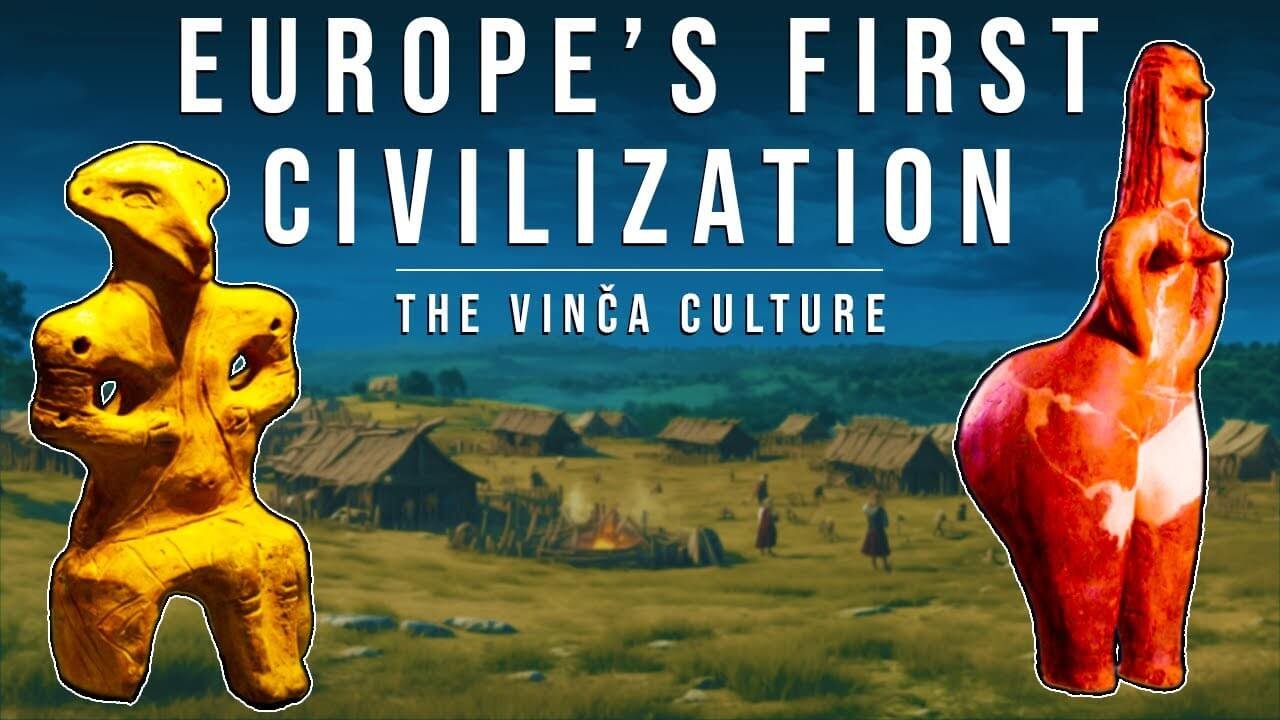The Vinča culture, emerging over 8,000 years ago during the Neolithic period in Southeastern Europe, represents what many consider to be Europe's first civilization. This civilization, flourishing between 5400 BC and 4500 BC, marked a significant leap in societal development, showcasing advanced farming, metalworking, and potentially the inception of writing, long before the rise of civilizations in Mesopotamia and Egypt.
The Dawn of a New Era in the Balkans
In the fertile lands of the Central Balkans, the Vinča culture emerged as a beacon of Neolithic innovation. Named after a site near Belgrade where it was first discovered, this culture covered a vast portion of the Balkans. The Vinča people, descending from a blend of Anatolian farmers and European hunter-gatherers, established large, densely populated settlements that thrived for centuries. Their society was predominantly agrarian, valuing cattle highly but also venturing into the first known instances of metalworking in Europe. The sophistication of their societal structures suggests they were not just farmers but potentially warriors and traders, underpinning a complex social organization.
Technological Prowess and Cultural Complexity
The technologically advanced Neolithic society of the Vinca culture is what sets it apart. Their settlements were not only large and densely populated but also fortified, indicating a society conscious of defense and possibly engaged in conflicts with neighboring societies. These communities were strategically located near rivers, facilitating trade and access to natural resources. The Vinča people were adept in craft specialization, producing high-quality goods, including unique ritual ceramic figurines that bore intricate details of clothing, jewelry, and masks, hinting at a rich religious life.
A Leap into Metallurgy and Possible Writing
One of the most fascinating aspects of the Vinča culture is their potential development of metalworking and mining, predating the Sumerians' achievements by a millennium. They mined copper ores, laying the groundwork for metallurgy, and produced artifacts that might represent the world's earliest form of writing. This development suggests the Vinča culture could have established a class of metalworkers who wielded significant societal influence.
Symbols, Conflict, and Social Stratification
The symbols used by the Vinča culture, including abstract pictograms and hash marks, are subject to debate regarding their meaning. They could have served for trade, accounting, or ritual purposes. The extensive defenses around their settlements underscore a society prepared for conflict, further separating them from neighboring groups. Artifacts discovered, possibly gaming pieces or ritual items, along with evidence of weapons, indicate a society with clear social stratification and hierarchy.
The End of an Era
Around 4,500 to 4,400 BC, the hallmark lifestyle, pottery, figurines, and settlements of the Vinča culture vanished from the archaeological record. The reasons behind this decline remain a subject of speculation among historians and archaeologists. However, the cultural and technological advancements of the Vinča people undeniably influenced subsequent societies, including those along the Black Sea coast, embedding the Vinča culture as a pivotal chapter in Europe's prehistoric narrative.
In conclusion, the Vinča culture stands as a testament to the ingenuity and complexity of Europe's Neolithic societies. With their advanced agricultural practices, metalworking skills, and the possible inception of writing, the Vinča people laid the groundwork for the future civilizations that would rise across Europe, leaving a lasting legacy that continues to intrigue and inspire scholars and historians today.










